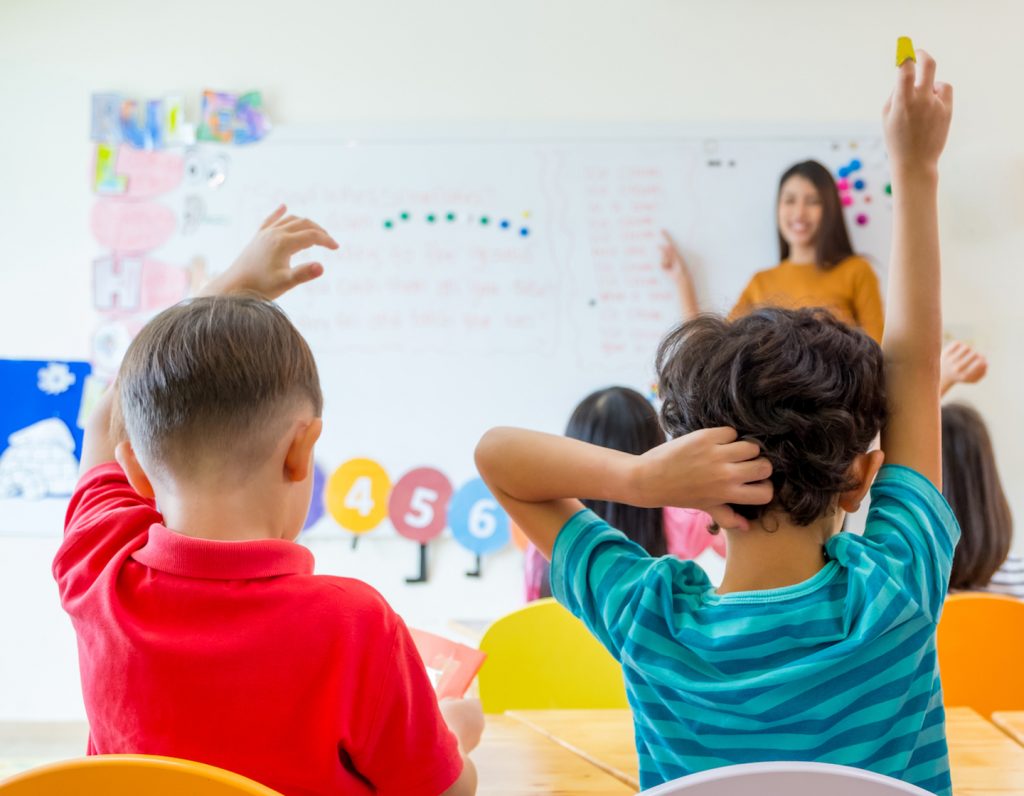
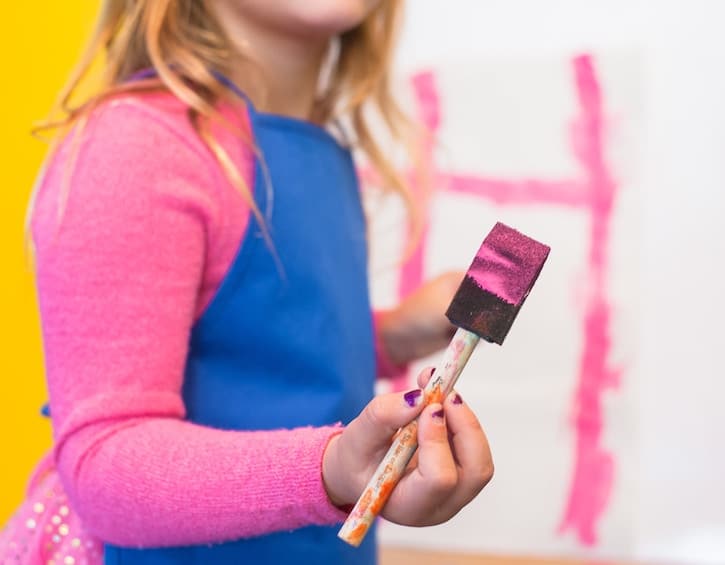
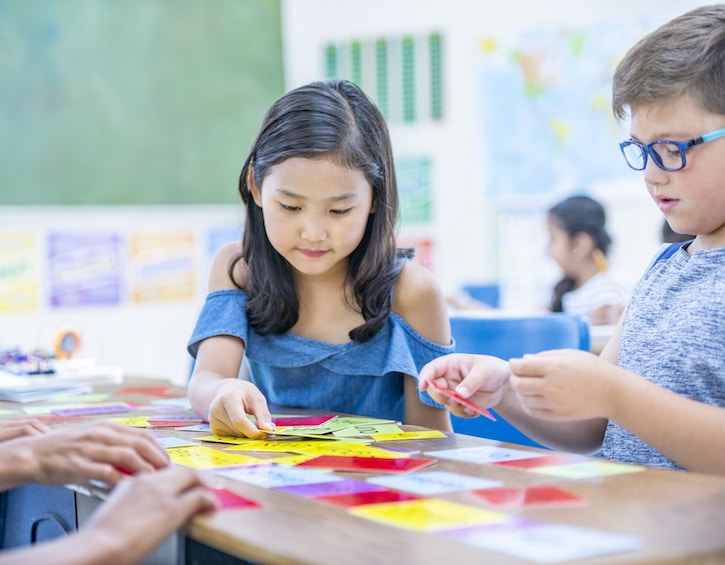
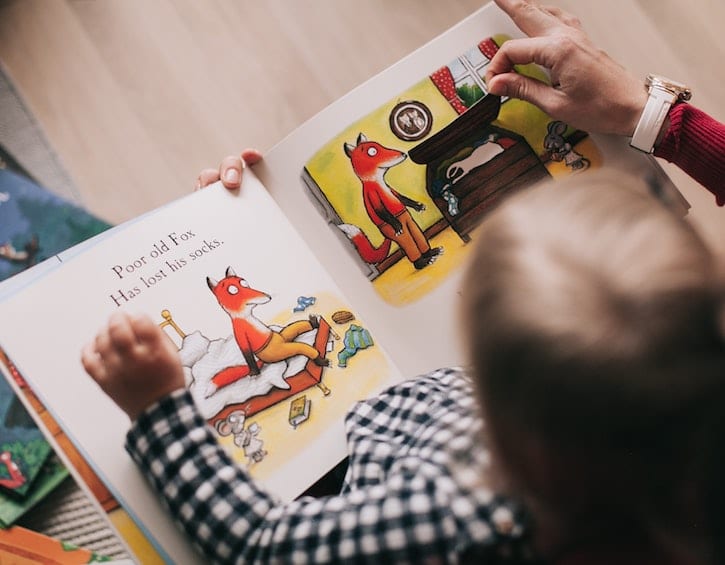

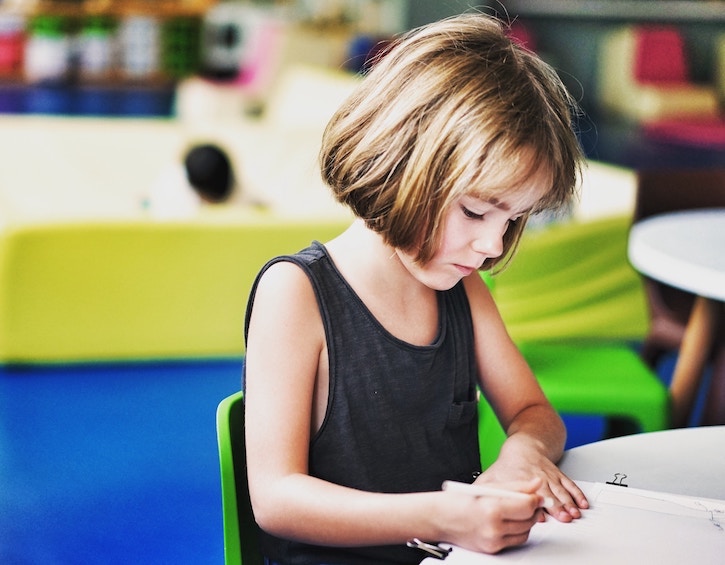
How to help your child study, no matter what type of learner they are.
It’s easy to assume that everyone learns the same way as ourselves. Like many teachers, I learn well in a classroom setting. Give me a book and a little guidance on where to start, and I’m happy. Not everyone is like that. After years of teaching, I know it’s no good forcing a square peg into a round hole. Instead of trying to make active students sit still and read a story, why not turn a text into a drama piece? Or make the kids swap seats every time they read an adjective for great results.
For a lifelong book-learner like me, these activities seem more like fun and games than studying. But when I see how well students understand what they’ve read, I’m convinced that knowing what type of learner someone is and how to tailor their studies to suit them, will guarantee success.
In this slideshow, I’ve broken learners down into five types: kinaesthetic, verbal, visual, auditory and logical. It’s a handy starting point to understanding your child’s preferences and abilities. Once you know your child’s learning type, you’re in a great position to help them work in the way that suits them best.
Read more: Extracurricular Activities And Classes In Hong Kong: From Toddlers To Teens
The hardest one to say and the easiest one to spot – kinaesthetic learners love moving around. They want to touch, wriggle, tap and shuffle everything as a way to understand it.
Challenges
Left to their own devices, kinaesthetic learners will explore everything within reach. Schoolwork is rarely interactive and it doesn’t provide enough stimulation to hold these learners’ attention. Kinaesthetic learners struggle to show their true abilities on paper, which can be especially discouraging when it comes to exam time.
Tips for success
At home: Bring as much movement as possible into studying. For reading comprehension, tape the text to a wall at one end of a room and the question sheet at the other. Kids will love running between the two!
Break learning up into small, activity-driven chunks. Try putting short maths exercises in different spots in your home; the answer to the last question is the number of times your child needs to bounce a ball on their journey to the next exercise.
Act out everything you possibly can: conduct imaginary science experiments, walk through a scene from history and describe what you see, or create a dialogue out of vocabulary homework. Bring learning to life and you’ll find that your child loves to study with you.
At school: Your child needs to be encouraged to stay in their seat while still interacting physically with the work in front of them.
They can circle or underline key words in a text. If they tap lightly on every word they read or even tap their toes in their shoes, this can help them to stay focused on what they’re doing.
Finally, finger drawings are a great way to bring their work to life without getting into trouble for doodling. With their index finger, they need to draw a picture next to every paragraph to show the main idea of what they’ve read.
These learners love pictures, graphs, colours, and spatial relationships. When reading, they will look around the page for any pictures or other clues which can tell them what’s happening. They are sometimes discouraged from doing this by parents and teachers, but it’s an excellent skill and a great way for these children to engage with reading.
Challenges
These students are often slower to develop in reading and writing. A lot of early years learning is based on words on the page and students who don’t learn this way can feel discouraged.
Tips for success
At home: Turn everything you can into visuals. This doesn’t just mean drawing pictures. You can break down grammar rules into tables, summarise a story using a plot mountain and make flashcards of key vocabulary.
A great game for visual learners is called Back to Back Pictures. It helps your child develop their speaking and listening skills, and is great fun at the same time. To play, you need two pictures which are slightly different (“spot the difference” ones are great for this); you and your child sit back to back, each holding one of the pictures. Take it in turns to ask and answer questions about the images and draw the missing details on to make them look exactly the same.
At school: Highlighting and note taking can be started from an early age. Colour coding things will help these learners remember details and find them again as they re-read. Drawing clouds around main ideas, or lines between key events, will turn what’s on the page into something more visual for them.
This learner type doesn’t just love speaking, but anything related to words, i.e. reading and writing. These learners absorb words and process them exceptionally well. They can recap a story in great detail, even if it seems like they aren’t paying attention to it.
Challenges
As you can guess, this sort of learner often likes to talk through their answer before putting it down on the page. This can mean that they struggle to learn independently. Even students who go directly to writing will only think through what they want to say as they put it on the page. This leads to very unfocused answers and can hide the diamonds of their ideas in a lot of rambling rough!
Tips for success
At home: You should help your child mould their ideas into clear and concise answers. Encourage them to note down a few keywords before they start speaking. If they drift away from answering the question, guide them to look back at their keywords before continuing.
Even children who can write their answers down directly may struggle to be clear and to the point. Again, have them write down three to five keywords before answering in full.
You can also practise summarising stories together using varying amounts of detail: challenge each other to explain the plot of a movie in five sentences, then three, then just one. This is a great tool for organising your ideas before expressing them.
At school: Encourage your child to continue noting down keywords before writing properly in order to keep their answers focused.
For those who need to say their answers aloud, get them to mouth their thoughts to a cartoon character on one of their rubbers or pens. They can be sneaky enough that nobody will notice and it will help them to shape their ideas into great answers!
Read more: Back To School Guide: Where To Get Essential Supplies For The New Academic Year
Listening is the key source of information for these types of learners. It might not seem like it at home when you’re asking them for the hundredth time not to leave their bag on the floor, but these children learn best from what they hear. You’ll see them respond well to audiobooks and they’ll remember what their teacher said more than what was written on the board.
Challenges
Since these students are so focused on being receptive to what they hear, they can get pushed to the edge of a loud, interactive group of other learner types. Teachers can find it hard to know if these children have fully understood things, as they’re not as responsive as the others in the class.
Tips for success
At home: Listen to stories together and pause them every few minutes to think of questions you want answers to, e.g. “Where are they going next?” or “Why don’t they fight back?” This will help your child become a more active participant in their learning, rather than waiting for information to come to them.
A great game for these learners is The Interrupted Story. You have two minutes to tell a true story (e.g. “How I Lost My Phone”, or “My First Memory”), but the listener(s) can interrupt you with any relevant questions and you must answer them before getting back to your story. If you can finish your story in two minutes, you win, but if there are enough relevant questions to keep you from completing it, then you lose! Take it in turns with your child to be the storyteller and the interrupter, so you can model what relevant questions sound like.
At school: Encourage your child to take notes, even if it’s just a word or two at first. This way, they are starting the process of transferring what they hear into writing. These notes will also help their teacher to see whether or not your child has understood the main points of what’s been said.
Your child may even want to colour code their notes: green ticks for things they followed well, red underlines for anything they’re not completely sure of and want to ask about.
This is often referred to as the “mathematical” type of learner, but this preference for logical learning applies to all subjects, not just maths. In English, for example, the different writing techniques used in essays, letters and diaries need to be explained with rules and checklists, rather than understood from reading examples.
Challenges
Children who learn in this way like rules and systems, and find it hard to answer questions to which there is no “correct” answer, e.g. “Why do you think the character did that?” or “What do you think was the most important event in the war?” This issue becomes more significant as children get older, and a student who excelled at learning grammar rules when they were younger can quickly drop from the top of the class when questions ask for more personal interpretation.
Tips for success
At home: Practise reverse-engineering rules. This is a skill which comes naturally to a lot of people, but not to logical learners as they prefer to know the rules upfront.
Explain to your child how they can model their thinking process by speaking their thoughts aloud as they read. For example: “Two Triumph at Tennis”, a snappy headline which catches my attention with alliteration and gives me the main details of the story. Then, in the first paragraph, I can see that there are lots of facts. I could read just this paragraph and know what’s happened…”
At school: Encourage your child to make their own checklists for tasks they need to complete. They can ask a teacher to look at their checklist to make sure they’ve got all of the main points before starting their work.
Teachers will find it helpful to see your child do this and will be able to signpost items for your child’s checklist as they teach.
Read more: Music Lessons For Children In Hong Kong: Piano, Guitar, Violin And More
Editor’s note: This post was originally published on 10, May 2018 by Willow Hewitt and updated by Alex Purcell Garcia on 9, September 2019.
Featured image courtesy of Getty Images, image 1 courtesy of Mike Fox via Unsplash, image 2 courtesy of Getty Images, image 3 courtesy of Lina Kivaka via Pexels, image 4 courtesy of Malte Wingen via Unsplash, image 5 courtesy of pan xiaozhen via Unsplash.
 View All
View All










 View All
View All




 View All
View All


 View All
View All








